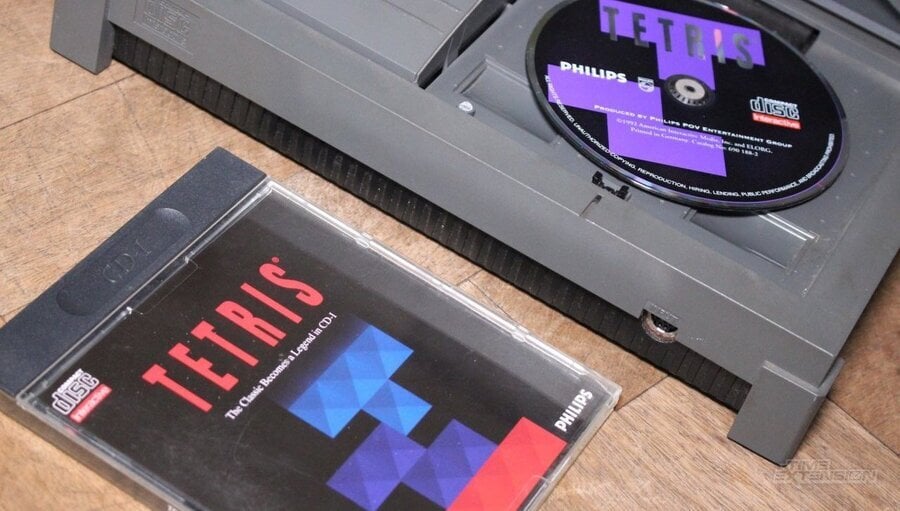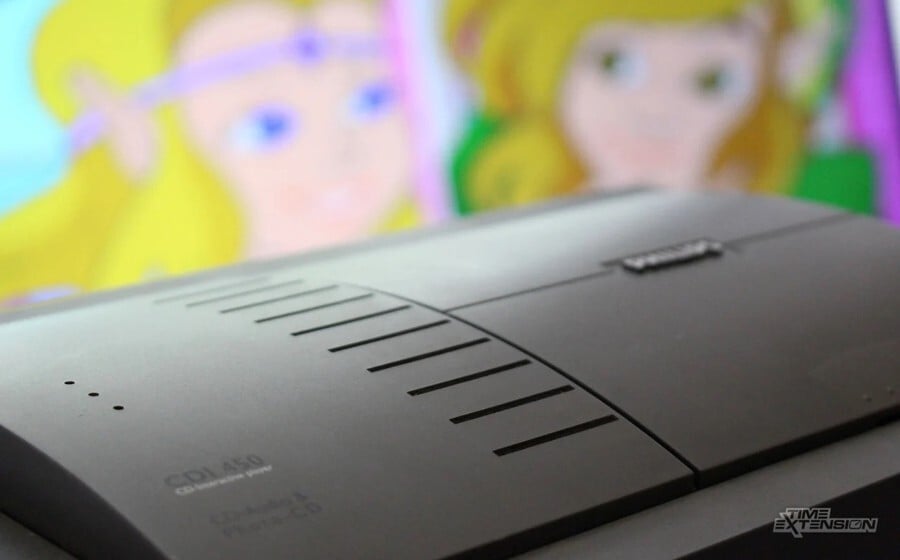
The following article originally appeared on the website Fanbyte back in 2020 but has since been removed as part of an SEO cull. Given its one of the only interviews we're aware of with the composer Jim Andron about his work on Tetris CD-i and considering is not available elsewhere through Wayback Machine, we've decided to republish it here with some minor edits so that people can learn about how the remarkable soundtrack came to be.
The video game composer Jim Andron isn’t the easiest person in the world to contact. Unlike his contemporaries, he doesn’t have a strong social media presence, an easily accessible contact email, or even many pictures of himself online. But if you ask around, you'll likely find a lot of fans of his work on the soundtrack for Tetris CD-i on the Philips CD-i.
Over the years, the soundtrack for the game has collectively racked up thousands of views on YouTube and has also been praised widely across both Reddit and Twitter, with many considering it one of the few redeeming features of the 1992 release. We'd heard about the game in the past from scanning wikis and other sources of information, but it wasn't until 2020 that we heard Andron's soundtrack for the very first time, stumbling across a video of the game in action from the Twitter user @dosnostalgic.
Inevitably liking what we heard, we were eager to learn more about the game's soundtrack, but information about the game was not exactly forthcoming. So, in the off chance of getting a response, we tweeted at a non-descript Twitter account claiming to be composer Jim Andron — and, to our surprise, received a response later the same day. What then followed was one of the only interviews with Andron about his work on Tetris CD-i, giving more information about how he began writing music and how he approached the score.
Andron first began his career in video game music working on the soundtrack for the Silent Software-developed video game Who Framed Roger Rabbit? based on the film of the same name. However, something worth noting is that his music career actually predates this by many years.
In the early 1970s, he was briefly a member of The New Christy Minstrels, an ensemble folk group that had several hits in the 1960s, including “Green, Green,” “Today,” and “This Land is Your Land.” In addition to this, Andron was also a songwriter for many years for other musicians, with one of his most notable compositions being a duet between Johnny Mathis and Dionne Warwick called “Got You Where I Want You.”
“Even when I was in school, I would go off for hours at a time and write pop songs,” Andron tells me over the phone. “So that was really what I always wanted to do. I’d hoped I would become the next Elton John or whatever. We all harboured those dreams. I was born in 1950, so I sort of came of age with The Beatles and all of that. And I would say on the whole that was really where I wanted to be as a writer.”

Following his work on Who Framed Roger Rabbit?, Andron received his biggest break yet in video game music, getting to work as a composer on a number of CD-i games. This included such eclectic titles as Zombie Dinos from the Planet Zeltoid, Lords of the Rising Sun, and Girl’s Club (to name just a few), but it was the first of these projects that would become his favourite: the soundtrack for Tetris CD-i.
At the time, Andron was working at a jingles company in Wayne, Pennsylvania, creating, among other things, Station IDs for regional radio stations across the United States. It was while working for this company that he managed to get in touch with Tetris CD-i creative director David Reardon and the Funhouse senior producer Cliff Johnson to discuss the prospect of writing music for Philips’ new machine. Though the Philips CD-i today often features on lists of the “Worst video game consoles of all time”, it was an exciting prospect for Andron as a songwriter, who had been annoyed at the limitations of composing for other machines.

“I’d just finished working on the Who Framed Roger Rabbit? game,” Andron recalls, “And I had really been chafing at the limitations of that format where I actually had to write down to one single voice. So being able to write basically with a full palette of sounds and kind of anything I wanted in CD quality was very freeing and I tried to take advantage of that.”
As Andron tells us, he managed to make use of the setup that he had at his day job, reaching an agreement with his employers to let him use his workspace on weekends and evenings to crack on with the score. The CD-i team would send him the visuals for the game without any of the gameplay, and ask him to score music to go along with the FMV backgrounds. He’d then take a seat at his rackmount and let his fingers walk across his keys of his keyboard (Andron previously said he was using a JV-1080, a JD 990, and TG77 Yamaha at the time, but he now believes he misremembered the former two.)
“I didn’t listen to anything else that was being done on Tetris on other formats,” Andron says. “As [David Reardon] told me at the time, ‘Look, we’re taking a different approach here.’ Listening back, I hear a lot of David Foster’s influence. I think he was a big influence on me at the time. He had actually played on a song of mine, the duet with Johnny Mathis and Dionne Warwick.”
I didn’t listen to anything else that was being done on Tetris on other formats. As [David Reardon] told me at the time, ‘Look, we’re taking a different approach here.’
The resulting new-age style made the soundtrack stand out from the other Tetris titles that had already been released — the majority of which had leaned heavily into the game’s Russian origins and used the traditional folk song “Korobeiniki.” In contrast, Andron’s approach was significantly more "pop", with the composer creating a bunch of long electronic ballads and then condensing them down into two-minute snippets that could be looped along to the gameplay. When combined with the FMV visuals, this made for a surprisingly relaxing result.
“The visuals for Tetris, they’re very static,” Andron explains. “It was a waterfall or a babbling brook. You really had to get kind of esoteric when figuring out what your emotional connection to the visuals were. So I’d sit there in the studio and I’d just start playing and pretty soon something would come along and I’d be like, ‘Oh, I like this. You know, I don’t know how well it connects necessarily with what I’m watching, but I really like it and there may be some kind of emotional connection between the two.’”
Following the release of Tetris CD-i, Andron went on to compose a number of video game scores — most of which were orchestral — before eventually leaving the games industry to focus on his day job. Remarkably, though, the audience for his music has only seemed to grow, something which he attributes mostly to YouTube.
“I’ve been very appreciative of the fact that this music continues to resonate with people,” Andron tells me. “It’s kind of amazing to me. Look, I know there’s a bit of hipster irony to all of this and you know there’s kind of a ‘So bad, it’s good’ kind of context to it. But I also think with a lot of people there seems to be a genuine connection and probably my guess is it is something from people’s childhoods that they remember fondly.”
Now enjoying his retirement, Andron spends much of his time simply recording music for himself (you can check some of his songs out here). He’s not really thought much about making a return to video game music, but it’s something that he would consider if the opportunity ever arises.






Comments 10
That music is really good, though it would sound better on the snes. Also that has got to be some of the worst tetris playing I've ever seen.
Great job keeping this around! I had been in touch with Andron in 2017 trying to do an interview with him and never got a response. Glad someone got to 'im.
Love the CD-I Tetris soundtrack, It's '90s shopping mall as all Hell, but I do wish other developers would use this calming tone for soundtracks, rather than something orchestral constantly.
Also, it was refreshing for a Tetris game NOT to have some Russian sounding soundtrack for once.
I echo the thanks to TE for preserving this great interview! There is nothing ironic about my appreciation for this music. It’s genuinely fantastic!
Also, deleted for a “SEO cull”? Good lord the internet is dystopian…
@XiaoShao Yeah, I can't find the tweet now, but the guides editor basically gave everyone a heads up that some of their work might be deleted. It's basically because Fanbyte was gutted all except for the the guides team and this stuff no longer fits the site's current direction. I luckily created a backup of everything before it happened.
Don't mind me if i do but for completeness sake, here's a link to the original Fanbyte interview: https://web.archive.org/web/20200922173005/https://www.fanbyte.com/features/before-tetris-effect-there-was-the-vaporwave-bliss-of-tetris-on-the-cd-i/
I've never heard these tracks before, but I'm surprised at the love they're getting. If you had asked me to guess the music without any context I would have said:
A love theme from a low budget 80's teen movie, as if the producer asked for 'like Peter Cetera, but not enough to get us sued.'
Or
Hold music for the lost luggage phone line at a regional airport.
But Tetris? No. Never in 1,000 years would I say this is Tetris music. In fact, I feel the need to listen to the 'real' Tetris theme to cleanse my palette.
Also, that Tetris playing was painful to watch.
@XiaoShao what is a SEO Cull? as in tetris was found good enough by google?
@JackGYarwood ah ok, i understand now, but was it your interview to begin with
@romanista Yep! It was my interview with Jim.
Leave A Comment
Hold on there, you need to login to post a comment...